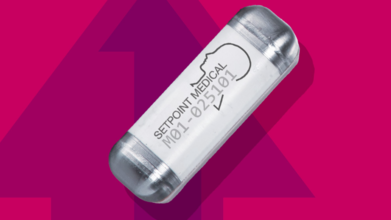- Health Conditions A-Z
- Health & Wellness
- Nutrition
- Fitness
- Health News
- Ayurveda
- Videos
- Medicine A-Z
- Parenting
- Web Stories
Former Anti-Vaccine Leader to Weigh In On CDC Vaccine Strategy

Credits: (L to R) - CDC, Inthesetimes.com, ResearchGate, Getty Images
In another news, a former leader of the anti-vaccine group Children's Health Defense will be speaking on thimerosal in flu vaccines at a meeting of the newly appointed vaccine advisers to the US Centers for Disease Control and Prevention (CDC).
The presenter is Lyn Redwood, who is a nurse practitioner with experience in pediatrics and family medicine. She has previously worked as president of the World Mercury Project in 2016, which expanded its mission two years layer to become Children's Health Defense. This was founded by the current US Health and Human Services Secretary, Robert F Kennedy Jr.
What Is Thimerosal?
It is a preservative that is used in vaccines to prevent any microbial growth. However, it was removed from most shots decades ago due to the concerns that it contains mercury.
Many studies, including the CDC website also notes that: "Thimerosal is approximately 50% mercury (Hg) by weight. A 0.01% solution (1 part per 10,000) of thimerosal contains 50 µg (micrograms) of Hg per 1 mL dose or 25 µg of Hg per 0.5 mL dose."
The World Health Organization (WHO) notes that vaccines contain ethylmercury, a different type of mercury, which can be cleared off a body easily and "does not pose a health risk". Whereas methylmercury is different, and as WHO notes, is found in some fish. However, it has not been linked to any neurodevelopment issues, including autism. Yet, it has become a key focus for groups of anti-vaxxers, who argue that vaccines are linked to autism.
Why This Meeting Could Be Concerning?
The decision to include a discussion and vote on thimerosal in flu vaccines at this week’s meeting has raised concerns within the public health community. Thimerosal, a mercury-based preservative, is no longer used in most flu vaccines for children, which now come in single-dose vials or prefilled syringes. However, it is still present in some multidose vials, which make up about 4% of flu vaccines administered in the U.S.
Health experts worry that revisiting thimerosal — long the subject of debunked claims linking it to autism — could reignite misinformation. These concerns have intensified following Kennedy’s move to dismiss all 17 previous members of the Advisory Committee on Immunization Practices (ACIP), replacing them with eight new members. Among the new appointees, two have served as expert witnesses in lawsuits against vaccine manufacturers, and another has falsely claimed that Covid-19 vaccines have led to deaths among young people.
“I actually don’t know any pediatric practices that even use that multidose influenza vaccine,” said Dr. Sean O’Leary, a pediatrician at Children’s Hospital Colorado and liaison to ACIP for the American Academy of Pediatrics, as reported by CNN.
Redwood And History With Vaccines
Redwood’s upcoming presentation to the CDC’s vaccine advisory committee is an unusual move. Typically, presentations are made by members of ACIP working groups who have spent months reviewing and analyzing data on specific vaccine-related issues. In this case, the vote on thimerosal was added to the agenda just days ago, and it remains unclear what exactly the discussion and vote will cover regarding the preservative’s use in flu vaccines.
Her involvement in vaccine debates has long centered on concerns about thimerosal and its alleged link to neurodevelopmental disorders, including autism — a connection that has been thoroughly debunked by multiple studies. According to Children’s Health Defense, Redwood claimed in 1999 that her son had received 125 times the EPA’s recommended limit for mercury exposure through infant vaccines, which she believes led to his autism diagnosis. Since then, she has coauthored papers and testified before Congress on the issue.
US Faces Nationwide STD Epidemic As Cases Surge Past 2.3 Million

The Centres for Disease Control and Prevention (CDC) has just dropped a reality check: more than 2.3 million Americans are living with gonorrhoea, chlamydia, or syphilis and the rates are climbing so high, it’s now officially a nationwide epidemic.
A 2023 CDC report paints a troubling picture. Chlamydia takes the top spot with 1.64 million infections, gonorrhoea follows at over 601,000, and syphilis, once on the brink of eradication, is making a bold and unwelcome comeback. In Mississippi alone, congenital syphilis (passed from mother to baby during pregnancy) has skyrocketed by a staggering 1,000 per cent. While its growth slowed slightly in the past year, the overall trend remains deeply worrying.
But what is driving this surge? Experts point to a mix of factors: dwindling sex education, earlier sexual activity among teens, gaps in prenatal care, and the fact that many people do not recognise symptoms until it is too late.
What do these bacteria look like on humans? Here is a breakdown of the three:
Chlamydia
Signs and symptoms
- In women: Often none at all, but when they do appear, they bring abnormal vaginal discharge, pain during sex, or a burning sensation while peeing. Left untreated, it can cause pelvic inflammatory disease and infertility.
- In men: Pain or burning during urination, penile discharge, and testicular pain. Some men also have no symptoms.
- Being under 25 and sexually active
- Multiple sexual partners
- Inconsistent or no condom use
Through vaginal, anal, or oral sex with someone infected, even if they do not have symptoms.
Prevention and Treatment
Consistent condom use; regular screening, especially if you are under 25 or have multiple partners; and limiting the number of sexual partners. Usually, a straightforward course of antibiotics is prescribed, but both partners must be treated to prevent ping-pong reinfection.
Gonorrhoea
Signs and symptoms
- In women: Painful urination, increased vaginal discharge, pelvic pain, or bleeding between periods. Sometimes, no symptoms at all.
- In men: Pain when urinating, pus-like penile discharge, or swelling in one testicle.
- Age under 25 and sexually active
- Multiple partners or a new partner without protection
- Previous history of STDs
Through vaginal, anal, or oral sex with an infected person. It can also pass from mother to baby during childbirth.
Prevention and Treatment
Condoms, regular testing, and talking openly with partners about sexual health. Reportedly, a single antibiotic injection is currently the go-to. It is important to note that gonorrhoea has been developing resistance to many antibiotics, making prevention even more important.
Syphilis
Signs and symptoms
- In early stages: A single, painless sore on the genitals, anus, or mouth, and swollen lymph nodes.
- In later stages: Skin rashes, fever, fatigue, and, if untreated, damage to the brain, nerves, and heart.
- Congenital syphilis: Passed from mother to baby in the womb, leading to stillbirth, premature birth, or serious health issues in newborns.
Risk factors
- Unprotected sex
- Multiple partners
- Men who have sex with men
- Lack of prenatal care
How it spreads
Through direct contact with a syphilis sore during vaginal, anal, or oral sex, or from mother to baby during pregnancy.
Prevention and Treatment
Regular STD testing, consistent condom use, and early prenatal screening for pregnant women. Penicillin injections are simple and effective, but only if caught early.
The surge in STD cases across the US is not just about risky behaviour; it is about gaps in education, healthcare, and awareness. Many people carry these infections without knowing, passing them on silently. It is clear that one should get tested regularly, use protection, and if you are diagnosed, complete your treatment and tell your partner.
FDA Approves First Neuroimmune Modulation Device for Rheumatoid Arthritis

Credits: Setpoint Medical
The U.S. Food and Drug Administration (FDA) has granted approval to the SetPoint System, a neuroimmune modulation device designed to treat adults with moderate-to-severe rheumatoid arthritis (RA). This marks a new, device-based approach for patients who have limited options due to inadequate response or intolerance to current advanced therapies.
Who Can Benefit?
The SetPoint System is intended for people whose RA is not effectively controlled with, or who cannot tolerate, advanced treatments such as biological and targeted synthetic disease-modifying antirheumatic drugs (DMARDs).
What Is Rheumatoid Arthritis (RA)?
RA is an autoimmune disease that causes painful joint inflammation, stiffness, and long-term joint damage if left untreated. While existing medications can help, some patients experience insufficient relief or serious side effects.
How the Device Works
The SetPoint System is an implantable neurostimulation device that delivers a brief, daily dose of electrical stimulation to the vagus nerve. This nerve plays a key role in regulating inflammation. By activating the body’s innate anti-inflammatory and immune-restorative pathways, the therapy aims to reduce disease activity without the systemic side effects associated with some drug treatments.
Once implanted, the device is programmed to deliver therapy automatically on a set schedule. It can remain in place and function for up to 10 years, offering a long-term treatment option without the need for daily medication intake.
Evidence from the RESET-RA Study
The FDA’s approval is based on results from the RESET-RA trial, which involved 242 patients. Participants were randomly assigned to receive either the SetPoint System or a sham (inactive) device.
The trial met its main goal, showing that more patients using the SetPoint System achieved at least a 20 percent improvement in symptoms, known as the ACR20 response, at three months, compared to those in the control group. Benefits in response rates and disease activity were sustained through 12 months of follow-up.
Remarkably, by the 12-month mark, three out of four participants had not used biologic or targeted synthetic DMARDs.
Safety Profile
The device placement procedure is minimally invasive and performed on an outpatient basis. The therapy was generally well tolerated, with a low rate of related serious side effects, reported in only 1.7 percent of patients in the trial.
Expert POV
Dr. Mark Richardson, principal investigator of the RESET-RA study and professor at Harvard University, said the approval reflects a promising new direction for autoimmune disease treatment.
“The approval of the SetPoint System highlights the potential of neuroimmune modulation as a novel approach for autoimmune disease, by harnessing the body's neural pathways to combat inflammation,” Dr. Richardson said in a statement. “After implantation, the SetPoint device automatically administers therapy daily, simplifying care for people living with RA.”
With this approval, the SetPoint System becomes the first FDA-approved neuroimmune modulation device for RA, adding a non-drug option to the treatment landscape. For patients struggling with medication side effects or insufficient relief, it offers a potentially life-changing alternative that works with the body’s own systems to restore immune balance.
Eli Lilly’s New Weight Loss Pill Helped People With Obesity Shed Nearly 15% In Late-Stage Trials

Credits: Canva
Eli Lilly’s experimental weight loss pill, orforglipron, may soon shift the landscape of obesity treatment. In a Phase 3 clinical trial that spanned more than 3,000 adults, the once-daily pill helped participants lose an average of 12.4% of their body weight over 72 weeks—with minimal lifestyle restrictions and no needles involved.
The company says these findings mark a turning point in the battle against obesity, one of the most pressing global health issues today. Here’s how this oral medication is poised to change everything we know about weight loss treatment.
According to Eli Lilly’s preliminary data, adults who took the highest dose of orforglipron lost an average of 27.3 pounds (12.4% of their body weight) over roughly a year and a half. Nearly 60% of those participants lost at least 10% of their weight, and almost 40% lost at least 15%.
These results are on par with injectable GLP-1 medications like Zepbound and Mounjaro—both also made by Eli Lilly—which have become blockbuster drugs in the obesity and diabetes market.
Dr. Céline Gounder, editor-at-large for public health at KFF Health News, put it bluntly in a CBS interview: “This is what we see with injectables. It’s impressive that a pill could match that.”
The key distinction? Orforglipron is not a peptide-based medication. That makes it easier for the body to absorb and eliminates the need for the strict dietary rules that apply to oral peptide drugs like Novo Nordisk’s Rybelsus.
How GLP-1 in Pill Form Works?
Orforglipron belongs to a class of medications called GLP-1 receptor agonists. These drugs mimic a gut hormone that plays a critical role in appetite regulation and glucose metabolism. They slow down stomach emptying, curb hunger signals in the brain, and help stabilize blood sugar levels.
Until recently, the most effective GLP-1 medications had to be injected, often weekly. Eli Lilly’s innovation—compressing this powerful mechanism into an oral pill—is a major step forward.
Unlike Rybelsus, the only approved GLP-1 pill on the market (which requires fasting and water restrictions), orforglipron is designed to be taken at any time of day, with or without food or water. That alone could make a big difference for patient compliance and everyday ease of use.
Are There Significant Side Effects For This Pill?
The benefits are clear, but what about the risks? As with other GLP-1-based drugs, gastrointestinal side effects were common. The most reported issues included nausea, diarrhea, constipation, and vomiting. Between 29% and 34% of participants experienced nausea—slightly higher than the 25–29% range seen with injectable Zepbound.
More significantly, about 10% of those on the highest dose had to drop out of the study due to side effects. While not uncommon in drug trials, it’s a notable figure for clinicians to weigh when considering patient suitability.
Still, experts say the side effect profile remains consistent with what is expected from GLP-1 medications. Importantly, orforglipron was also associated with improved markers of cardiovascular health, such as lower cholesterol and blood pressure.
What Makes Orforglipron Stand Out?
One of the most promising aspects of this pill is its potential to support long-term weight maintenance. Eli Lilly is also studying orforglipron’s role in helping people who initially lose weight on injectable drugs but are looking for a more manageable, sustainable option moving forward.
In essence, this pill could serve as a bridge—or even an off-ramp—for those who can’t or don’t want to stay on injectable medications forever. The convenience factor is huge.
There’s also the question of cost. Manufacturing pills is typically cheaper than producing injectables, and while pricing hasn’t been announced yet, orforglipron could offer a more affordable option for millions of people who need access to effective obesity care.
Eli Lilly has announced plans to submit orforglipron for regulatory approval by the end of 2025, with hopes of a global launch to follow soon after. If approved by the FDA and other agencies, the drug could hit the market in 2026.
This timeline is aggressive but realistic, given the urgency of the obesity crisis. More than 40% of American adults are classified as obese, according to CDC data. The economic burden and health consequences—including increased risk of heart disease, stroke, diabetes, and certain cancers—are staggering.
The public health need is urgent, and the demand for safe, convenient, and effective weight-loss treatments is at an all-time high. A pill like orforglipron, if approved, could help close that gap.
Despite the promising clinical data, not everyone is convinced just yet. Eli Lilly’s stock fell nearly 14% on the day of the announcement. Some investors expected even greater weight-loss figures or a better side effect profile.
But experts caution against reading too much into the stock market’s knee-jerk reactions. The potential of a widely accessible, non-peptide, once-daily GLP-1 pill is enormous—and it could spark a new era in weight management.
If successful, orforglipron will likely intensify the competition with Novo Nordisk, whose Wegovy and Ozempic have dominated the obesity and diabetes space for the past few years. The race is now on for the first truly scalable, cost-effective oral GLP-1 option—and Lilly may have just edged ahead.
Eli Lilly’s orforglipron isn’t just another weight-loss drug. It’s a potential paradigm shift in how we approach chronic weight management.
If it clears the final regulatory hurdles and delivers on its early promise, orforglipron could bring highly effective, user-friendly weight-loss treatment to millions of people—no needles, no meal timing, no fuss. That’s the kind of change the obesity crisis has been waiting for.
© 2024 Bennett, Coleman & Company Limited

